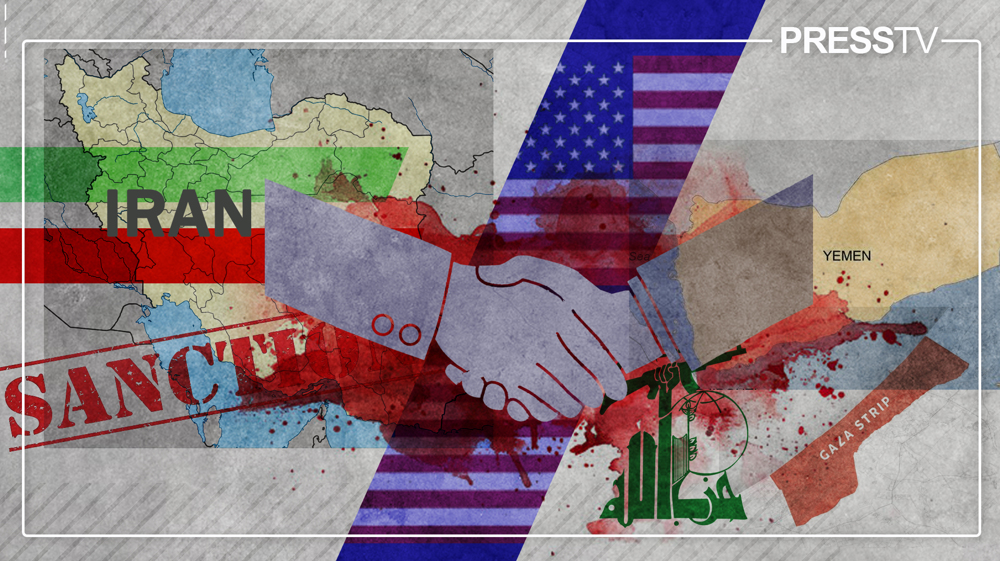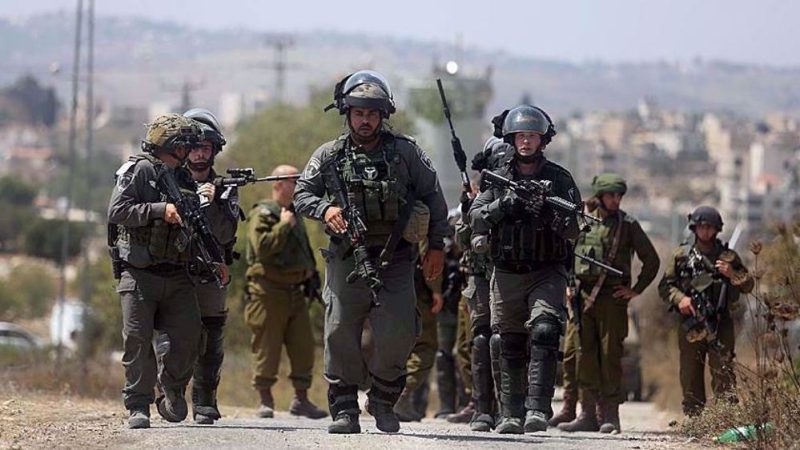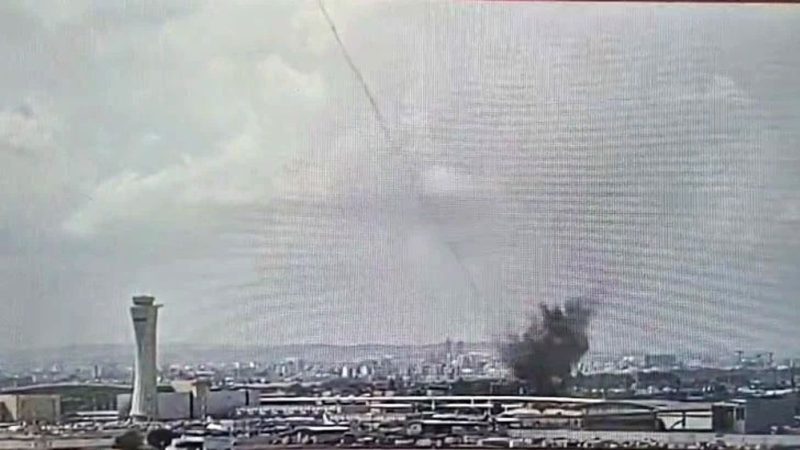Maximum pressure, minimal results: Why US plots against Iran and its allies backfire

By Mohammad Khatibi
The United States has significantly scaled up its military presence in the West Asia region, deploying additional assets amid heightened tensions with the Islamic Republic of Iran.
While Washington claims to advocate diplomatic engagement, its actions tell a different story – maintaining and piling up sanctions on Iran, intensifying airstrikes on Yemen, threatening the Hezbollah resistance movement, and aiding and abetting the ongoing genocide in Gaza.
All this reflects a broader strategy of coercion and intimidation by the Donald Trump administration. However, de-escalation in the region remains still possible if there is a ceasefire in Gaza, as evidenced by previous temporary pauses in the genocidal war that began in October 2023.
Also, Americans must realize that Iran’s influence in the region and its support for the just and noble Palestinian cause are undeniable factors that cannot simply be erased from the regional equation.
Since Washington’s unilateral withdrawal from the Joint Comprehensive Plan of Action (JCPOA), also known as the Iran nuclear deal, in May 2018, US policy toward Iran has relied on the so-called “maximum pressure” campaign, originally conceptualized by Donald Trump.
The intended goal of this campaign was to cripple Iran’s economy and force Tehran into submission through economic strangulation and diplomatic isolation.
However, Iran defied expectations, strengthening ties with regional powers such as China, Russia, and the broader Global South. Tehran joined the BRICS grouping and became a member of the Shanghai Cooperation Organization (SCO). It also signed long-term cooperation pacts with Moscow and Beijing in recent years, untying national interests from the JCPOA.
Iran has, in recent years, demonstrated resilience in sustaining crude oil exports despite sanctions and trade restrictions by employing a range of adaptive strategies. These methods include leveraging intermediary companies, utilizing complex shipping arrangements, and offering competitive pricing structures.
These measures underscore the broader dynamics of energy geopolitics, wherein nations facing external constraints develop alternative mechanisms to maintain economic stability.
These methods have also been used by other countries that have faced American sanctions.
Despite draconian sanctions, Tehran has demonstrated remarkable adaptability, forging new economic channels and solidifying its regional influence.
At the same time, its unwavering commitment to the resistance axis has continued and grown stronger amid the ongoing genocidal war against Palestinians in the Gaza Strip.
The continuation of the so-called “maximum pressure” campaign has done little to deter Iran’s strategic maneuvers or diminish the operational capabilities of its regional allies, who operate independently contrary to what the Western neocons claim.
Iran’s ability to navigate economic pressures while maintaining its strategic alliances shows its enduring influence. As the geopolitical landscape continues to shift, Tehran’s capacity to adapt and assert its role in the region underscores the complexity of West Asia’s security and diplomatic framework.
Talking of the resistance axis, Hezbollah, along with other regional resistance movements such as Iraq’s Popular Mobilization Forces, remains a formidable force capable of challenging American and Israeli plots.
Their resilience has been evident since the historic Operation Al-Aqsa Flood, when the Gaza-based Hamas resistance movement debunked the fallacy of Israel’s military and intelligence invincibility. Over the past 19 months, the Axis of Resistance has become a force to reckon with.
Iran’s Firm Stance: The Non-Negotiable Uranium Enrichment
Iran’s Deputy Foreign Minister, Kazem Gharibabadi, reaffirmed Tehran’s red lines in indirect talks with the US, insisting that the country’s right to uranium enrichment remains non-negotiable. pic.twitter.com/T4htgfYRZY
— Press TV 🔻 (@PressTV) April 20, 2025
On the other hand, Washington’s aggression on Yemen has also resulted in significant financial costs, with estimates indicating nearly $1 billion spent in just one month.
Reports from The Week suggest that munitions expenses alone exceeded $200 million, while broader operational costs—including naval deployments, intelligence efforts, and logistical support—have contributed to the rising expenditure.
Analysts from the Institute for the Study of War have also examined the financial burden, highlighting concerns about the sustainability of prolonged military adventures, particularly as Yemeni forces rely on low-cost drones and missiles that require expensive countermeasures.
Yemen has proved that it can strike at will if provoked. On Sunday, it was on full display again as a Yemeni ballistic missile bypassed Israeli military systems to pound the Ben Gurion Airport.
Washington’s expanded military footprint is directly tied to its pressure campaign on Iran, with new deployments reinforcing regional tensions.
Trump’s recent threats against Iran amid the indirect nuclear negotiations were another classic example of how the American foreign policy works, and Iran knows it well.
Iran has proven that it remains open to diplomacy while also being ready for any kind of escalation. In the event of any military adventures, Iran’s countermeasures could extend beyond striking US military bases, potentially disrupting Persian Gulf oil routes and retaliating against regional actors complicit in American plots.
Iranian officials have repeatedly emphasized the scale of the country’s deterrence capabilities, warning that any attack would lead to severe consequences for adversaries, including the US.
Iran’s parliament speaker, Mohammad Baqer Qalibaf, recently described American bases in the region as “powder kegs,” asserting that they could become potential targets in the event of military escalation.
Any attempt to target Iran’s nuclear infrastructure would be met with ironclad resistance, making retaliatory strikes not only necessary but very costly for the aggressors.
Iranian military officials have also noted the capability of the country’s armed forces to disrupt maritime traffic through the Strait of Hormuz, which would imperil global energy markets and reinforce Iran’s strategic leverage.
Beyond direct military engagements, Iran’s broader defense doctrine relies on a combination of conventional capabilities and asymmetric warfare. The country’s ballistic missile program remains a key pillar of its deterrence strategy, enabling precise strikes on adversary bases and infrastructure.
Iran’s naval forces, particularly its fleet of small attack craft and submarines, are equipped to challenge enemy forces in the sea and restrict hostile movements in the Persian Gulf.
Iran’s regional allies can also play a vital role in this. This complex network of allies provides the resistance axis with strategic depth. Iranian officials continue to assert that any military action against the country would provoke sustained countermeasures, escalating tensions across multiple domains and reinforcing Tehran’s position as a formidable regional actor.
So, Washington’s reliance on coercion rather than diplomacy with Tehran risks deepening instability in the West Asia region. The ball is in the US court. Iran is ready for any eventuality.
Mohammad Khatibi is a Tehran-based writer and university student.
(The views expressed in this article do not necessarily reflect those of Press TV)






